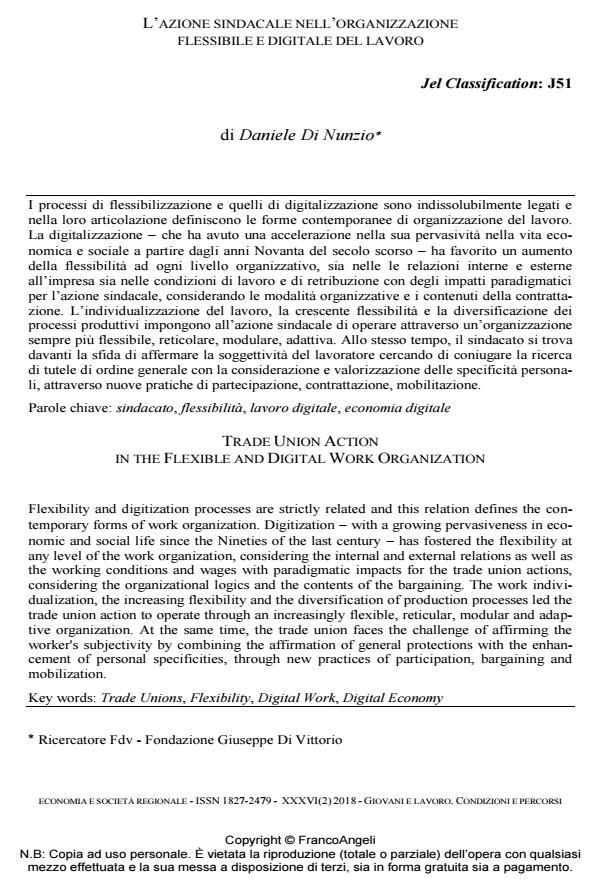Trade union action in the flexible and digital work organization
Journal title ECONOMIA E SOCIETÀ REGIONALE
Author/s Daniele Di Nunzio
Publishing Year 2018 Issue 2018/2
Language Italian Pages 16 P. 77-92 File size 417 KB
DOI 10.3280/ES2018-002005
DOI is like a bar code for intellectual property: to have more infomation
click here
Below, you can see the article first page
If you want to buy this article in PDF format, you can do it, following the instructions to buy download credits

FrancoAngeli is member of Publishers International Linking Association, Inc (PILA), a not-for-profit association which run the CrossRef service enabling links to and from online scholarly content.
Flexibility and digitization processes are strictly related and this relation defines the contemporary forms of work organization. Digitization - with a growing pervasiveness in economic and social life since the Nineties of the last century - has fostered the flexibility at any level of the work organization, considering the internal and external relations as well as the working conditions and wages with paradigmatic impacts for the trade union actions, considering the organizational logics and the contents of the bargaining. The work individualization, the increasing flexibility and the diversification of production processes led the trade union action to operate through an increasingly flexible, reticular, modular and adaptive organization. At the same time, the trade union faces the challenge of affirming the worker's subjectivity by combining the affirmation of general protections with the enhancement of personal specificities, through new practices of participation, bargaining and mobilization.
Keywords: Trade Unions, Flexibility, Digital Work, Digital Economy
Jel codes: J51
- Digitalizzazione, lavoro e contrattazione collettiva Salvo Leonardi, in ECONOMIA E SOCIETÀ REGIONALE 1/2019 pp.46
DOI: 10.3280/ES2019-001005 - Relazioni industriali e nuove tecnologie: conflitto, partecipazione e concertazione nell'era del lavoro digitale Matteo Turrin, in ECONOMIA E SOCIETÀ REGIONALE 3/2022 pp.55
DOI: 10.3280/ES2022-003006 - The variable geometry of bargaining: implementing unions' strategies on remote work in Italy Anne-Iris Romens, Valeria Piro, Francesco E. Iannuzzi, in STUDI ORGANIZZATIVI 1/2022 pp.129
DOI: 10.3280/SO2022-001006
Daniele Di Nunzio, L’azione sindacale nell’organizzazione flessibile e digitale del lavoro in "ECONOMIA E SOCIETÀ REGIONALE " 2/2018, pp 77-92, DOI: 10.3280/ES2018-002005